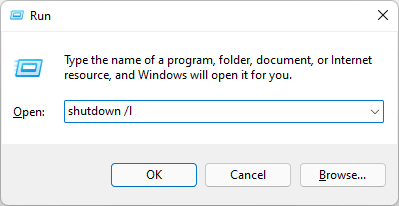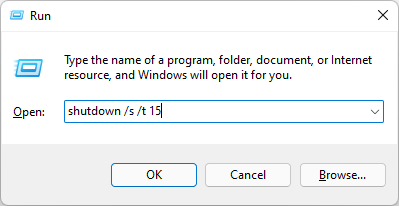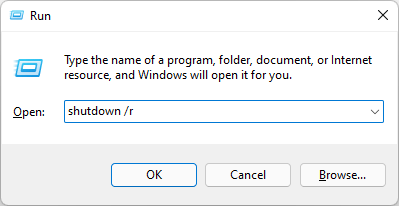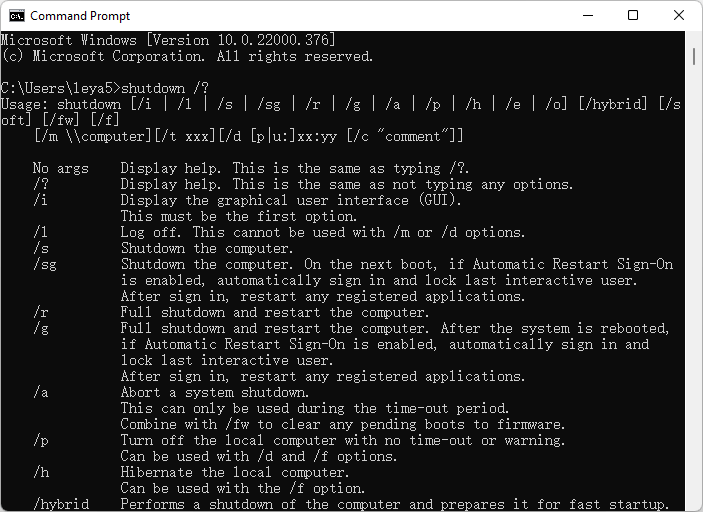WiseCleaner Think Tank
Encounter difficult computer problems?
All about maintenance and optimization of your Windows System.
Dec 22, 2021
In daily work or study, users will stop the computer from working through different power modes. These power modes include: Sign out, Standby, Hibernation, Sleep, Shutdown, and Restart. Some of these modes are easier to understand, such as Shutdown and Restart. However, there are some that can be ambiguous and easy to confuse, such as Hibernation and Sleep. Do you really understand the differences between them? Follow these articles and let these show clearly.

Sign out refers to the system sending a request to clear the system account that is currently logged in. After clearing, you can use other accounts to log in to the original system. Sign out cannot replace Restart, only the cache space and registry information of the current account can be cleared. Sign out is suitable for situations where another account is required to log in to the computer, and there is no need to restart the operating system at this time. In addition, some software needs to change the registry information during installation. In order to make the registry effective, you can choose to sign out, because the system will automatically reload the registry when each user logs in. In other cases, you need to choose to restart. Command line to sign out: (It is the lowercase letter L)
shutdown /l

Multi-user system. Sign out is convenient for users to switch system accounts.
After the operating system is switched to standby mode, the computer only has memory to maintain the data in it relying on electricity. As long as the memory is powered off, the data will be lost, and the power supply of other devices will be interrupted. The standby mode is not completely power-free. In the standby state, if an abnormal power supply occurs, the unsaved data before the standby will be lost, and the computer can only be restarted. The recovery speed of standby mode is the fastest, generally within five seconds. Applicable scenarios: Leave for a short time and ensure that there will be no abnormal power supply after leaving. After returning, quickly resume the previous working state.
After the system switches to hibernation mode, the operating system dumps all data in memory to a hibernation file (hiberfil.sys) on the hard disk and then cuts off power to all devices. When we start the system next time, it will read the data in the hibernation file from the hard disk and transfer the data to RAM to restore the state before hibernation. This mode consumes almost no power and is not afraid of a power failure after hibernation, but the cost is that it requires the same hard disk space as the physical memory. The recovery speed in hibernation mode is slow, depending on the size of the memory and the speed of the hard disk, it usually takes about 1 minute, or even longer. Hibernation does NOT support the wake-up operation and needs to start the system.
powercfg -h offpowercfg -h onshutdown /h
I have something to leave the computer, and I hope to continue when I come back, but I don't want to save these operations one by one.
This refers to Hybrid Sleep, which combines all the advantages of standby mode and hibernation mode (hereinafter referred to as Sleep). It is a new mode added in Windows Vista and later operating systems. After the system switches to sleep mode, the system will copy all the data in the memory to the hibernation file (hiberfil.sys) on the hard disk, and then turn off the power of all devices except the memory to keep the data in RAM.
When we want to restore, if there is no abnormality in the power supply during the sleep process, we can directly recover from the data in the memory, and the speed is very fast; if the power supply is abnormal during the sleep process, the data in the memory will be lost, and the system will Read data from the hard disk, but the restoring speed will be slower. In any case, this mode will not cause data loss. You can wake up the system anytime, just touch the mouse or keyboard.
Large files are being downloaded, and something leaves the computer. There is no guarantee that there will be an abnormal power supply. After returning, I hope to wake up the system at any time.
The system will first close all running programs. The background service of the system is turned off, and the system sends a special signal to the motherboard and power supply to cut off the power supply to all devices. The computer is completely shut down. The computer will be restarted the next time it is turned on. The operating system will read the system files again. Completely power off and shut down the operating system, but logging out will not shut down the operating system. The command line for shutdown:
shutdown /s /f /t xx
/s: You can use the cmd command to set the shutdown.
/f: Force running applications to close without forewarning users.
/t xxx: Set the time-out period before shutdown to xxx seconds. The valid range is 0-315360000 (10 years), with a default of 30. If the timeout period is greater than 0, the /f parameter is implied.

Do not use the computer for a long time, such as finishing all work and going home from get off work.
The system first performs a series of complete shutdown actions and then restarts the computer. The computer startup process roughly includes the following operations when the user presses the power button. The first is to supply power. Turn on the power switch to supply power to the internal fan and motherboard. At this time, the user can see that the power indicator has been lit. Hear the buzzing sound of the fan (it is normal for some good computers not to hear the buzzing sound). Start the BIOS boot program: BIOS startup includes hardware self-checking, whether it meets the operating conditions of the computer. Load the operating system, load the system operation files from the disk to the memory, and finally, the computer waits for the user to input commands and data. Restart cmd command:
shutdown /r

After installing new software, updating patches, or updating drivers, there will be a confirmation that the restart takes effect, and even the operating system completes the restart operation by itself.
Different power modes such as Hibernation, Standby, Sleep, and Shutdown are suitable for different user groups. This provides more possibilities for the rational use of computers and electrical energy. For more details about the shutdown command, please open the Command Prompt window, and then type the following command.
Shutdown /?

As mentioned above, you can use the cmd command to set the shutdown countdown. In addition, users can also use Wise Auto Shutdown to easily schedule computer shutdown, logout, restart, sleep, lock screen, etc. at any time.

As shown in the picture, Wise Auto Shutdown is a free tool that offers the possibility to manage power modes. The interface is very neat and simple. The user can select the task in the task selection area, then set the time and frequency in the time setting area, and finally start the task. Wise Auto Shutdown allows you to set the PC to shut down, restart, power off, log off, sleep, hibernate, and lock the screen once regularly or only at specific times. It makes the user's power management easier and more convenient.